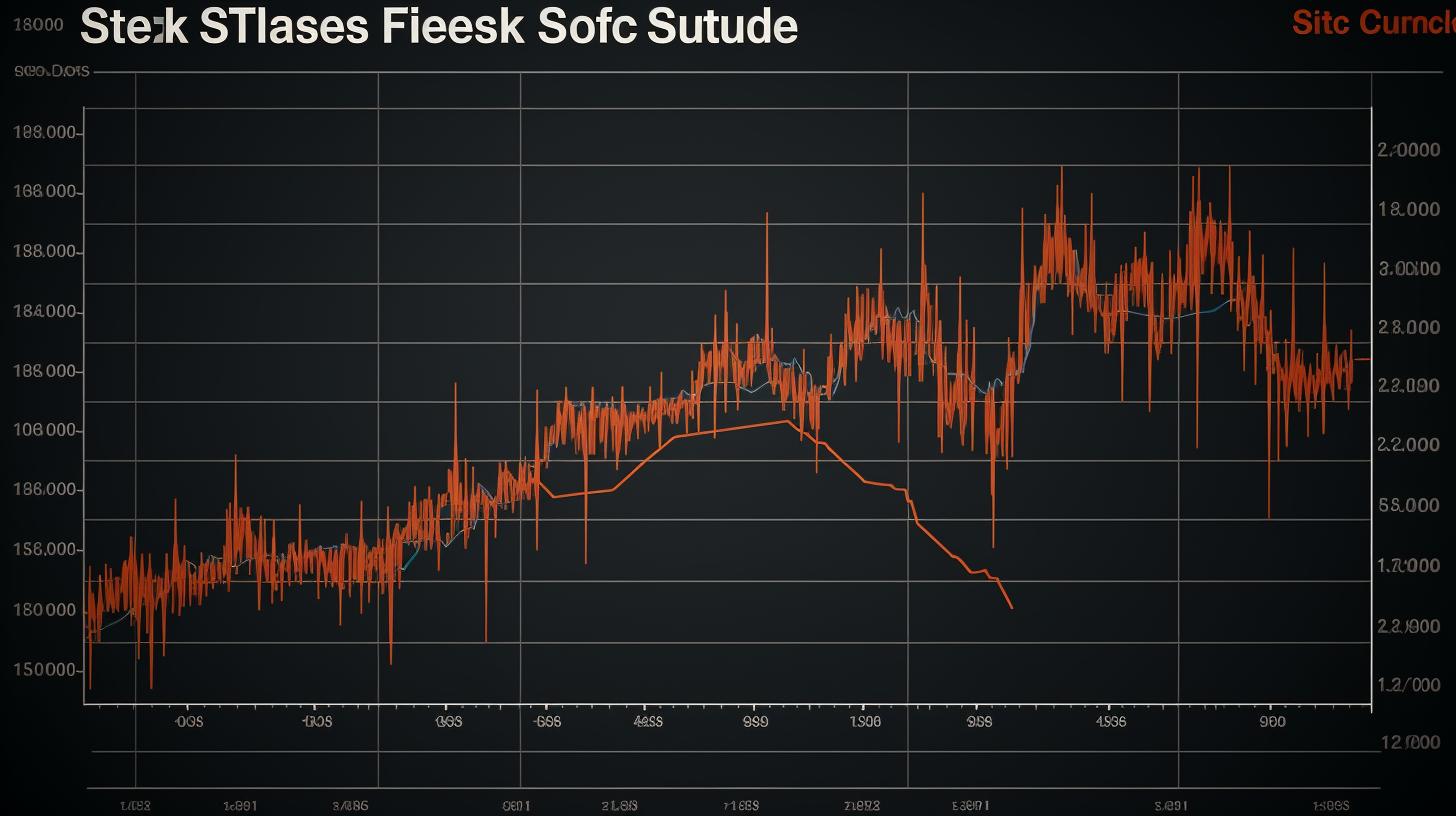## The Basics of the Stock Market
The rise of “meme stocks” — stocks that have gone viral with groups of investors from various online communities — during the pandemic proved it has never been easier to become an investor. Absent, in many cases, knowledge around the basics of the stock market, stay-at-homers were buying and selling — and buying more — like there was no tomorrow.
Remember the poster child of the meme stock era — AMC Entertainment? Between the end of 2020 and the first week of June 2021, AMC stock rose more than 3,300%. Between that peak and the end of 2023, the stock lost roughly 99% of its value.
As exciting as it was to watch, and maybe participate in, this is not investing — at least not investing for long-term wealth. To go down that road, you need a firm grasp of stock market basics.
### Understanding the stock market
Indexes are among the most important stock market basics for beginners to understand. They help explain the stock market and make it easier to become a long-term investor.
The three most-cited stock market indexes are the Dow Jones Industrial Average, known as “the Dow,” the Standard & Poor’s 500 (S&P 500 for short), and the Nasdaq Composite.
For the official definition of an index, we go to the company that maintains the Dow, S&P 500 and dozens of other indexes, S&P Dow Jones Indices, a division of S&P Global: “An index is a group or basket of securities, derivatives, or other financial instruments that represents and measures the performance of a specific market, asset class, market sector, or investment strategy.”
– The Dow Jones Industrial Average measures the performance of 30 domestic industry-leading companies, also known as “blue-chips.”
– The S&P 500 measures the performance of 500 large domestic companies, which make up roughly 80% of the value of the entire U.S. stock market.
– The Nasdaq Composite Index measures the performance of more than 2,500 stocks, including large technology firms, such as Apple, Microsoft and Nvidia.
The Dow and S&P 500 include stocks from both the New York Stock Exchange (NYSE). The Nasdaq Composite Index only includes stocks that trade on the Nasdaq Stock Exchange. The NYSE and Nasdaq are the primary marketplaces where traders and investors buy and sell stocks. They’re also the two biggest stock exchanges in the world.
For clarity, a stock exchange (NYSE, Nasdaq) is where stocks are listed, then bought and sold. An index (Dow, S&P 500, Nasdaq Composite) is a subset of stocks from one or more exchanges that represent a segment of the stock market.
Indexes give us a straightforward explainer on the basics of stock market investing and can help get you started investing as quickly and inexpensively as possible.
How and why? Because when somebody says the market was up or down today, you can usually look to these three indexes for confirmation. They’re broad stock market barometers.
And when you’ve opened an account and are ready to make an investment, you can invest in these indexes via low-cost products called exchange-traded funds (ETFs). An ideal strategy for not only beginners but all levels of investors, ETFs have no minimum investment requirements and provide a one-stop shop for investing in stocks.
These two points matter most to understanding the stock market and the rest of our discussion.
## Getting Started with Investing in Stocks
If you’ve ever opened a bank account, you should have no problem opening a brokerage account to buy and sell stocks. Opening a brokerage account has never been easier. Dozens of firms from big banks to large investment firms to online brokerages offer accounts with no or low balance requirements alongside commission-free trading.
## Investing with Small Capital: Fractional Shares and Simulators
You don’t need a lot of money to buy stocks.
Most brokerages allow you to purchase fractional shares, which just means less than one share. For example, if a stock costs $100 per share and you only have $25 to invest, you can buy 0.25 (25%) of a share of that stock, assuming the firm doesn’t charge a commission.
If you’re just starting out, it can make sense to start small. As you learn the basics, the last thing you want to do is put too much money at risk.
Some brokerages offer “paper trading” or simulated stock trading accounts. There are even stock market simulator apps that do likewise. These interfaces give you a feel for the type of environment you’ll be in when you use real money to buy and sell stocks, without the risk of using real money to buy and sell stocks.
## Long-Term Strategies for Beginner Investors
Use a long-term investment strategy long enough and before you know it, you’re no longer a beginner.
The first step is to not make this process overly complicated and confusing.
There’s no one-size-fits-all strategy when it comes to long-term investing. Ultimately, it comes down to these straightforward points:
– The goals you define will dictate your specific strategy (or strategies) and the type of account (or accounts) you use.
– Long-term goals, such as retirement, might require using tax-deferred investment accounts, including individual retirement accounts and 401(k)s.
– Near-term goals, such as saving for college or simply making money and generating income in the short term, might require a college savings plan or traditional, taxable brokerage account.
– Understanding your appetite for risk is the key to sticking to a strategy. How much of a drop in the value of your stock portfolio are you willing to stomach?
A “buy-and-hold” strategy is often considered the best long-term strategy for beginning investors. This means you buy stocks or other securities and hold them for a long time, regardless of market fluctuation. It’s passive investing, as opposed to active investing, in which you attempt to “time” the stock market.
While buy-and-hold investing requires time, consistency, and patience, it tends to outperform short-term trading over time.
You can execute a buy-and-hold strategy via two main sub-strategies.
You can invest a fixed amount of money or whatever you have on hand once a year without looking at the calendar or trying to time a stock market bottom. Or you can dollar-cost average, which means investing equal amounts incrementally over time, be it weekly, monthly, or quarterly. This approach allows you to purchase more shares when prices are low and fewer shares when prices are high, building your positions and subsequent nest egg over time.
A recent study from Charles Schwab confirms that it’s “nearly impossible” to time the stock market. Schwab analyzed several different types of approaches over a 20-year period and found that the next two best options are to invest an equal amount on the first day of each year or to use a dollar-cost averaging method that splits the same amount into a dozen equal portions that are invested at the start of each month.
Both of these hypothetical strategies performed nearly as well as one that timed the market perfectly and invested an equal amount at the lowest closing point each year.
## Creating a Diversified Portfolio: The Importance of Indexes
The number one mistake to avoid in stock trading is putting all of your eggs in one basket, which brings us to diversification and back to our earlier primer on stock market indexes.
Another function of indexes is that they allow financial institutions to create products, particularly ETFs, that attempt to replicate the performance of an index, such as the S&P 500 or Nasdaq 100. The Nasdaq 100 measures the performance of the 100 largest non-financial companies that trade on the Nasdaq stock exchange.
Rather than buying all 500 of the S&P 500 stocks or all 100 of the Nasdaq 100 stocks individually — a misguided impossibility for most of us — you can buy index ETFs, such as the SPDR S&P 500 ETF Trust (SPY), which aims to track the S&P 500, or the Invesco QQQ ETF (QQQ), which attempts to track the Nasdaq 100.
As the marketing from these ETFs touts, when you own SPY and QQQ you effectively own the powerhouses of the American economy and innovation. Think big tech names such as Apple, Microsoft, Amazon.com, Nvidia, and Meta Platforms, which make up a considerable portion of SPY’s and QQQ’s holdings, but also household names such as PepsiCo, Starbucks, and PayPal (in both SPY and QQQ) and Target, Walmart, and FedEx (only in SPY).
This said, diversification means two related things:
– Spreading your investments among different asset types, such as stocks, bonds, money market funds, cash, and real estate.
– Spreading your investments out within asset classes. Therefore, having a large position in various tech stocks doesn’t necessarily mean you’re diversified. In practice, SPY and QQQ are fantastic starts, but they only represent large U.S.-based companies. Consider adding other ETFs (perhaps as part of an all-ETF portfolio) or stocks that increase your exposure to mid- and small-cap stocks; other economic sectors such as consumer products and services, financial services, industrials and real estate; and different parts of the world, including emerging markets.
The reason why you diversify is to offset declines in one area with upside elsewhere.
Generally, when one segment of the stock market underperforms, another outperforms. The same can be said for broader asset classes. Having a stake in a variety of asset types and spreading your money (maybe not evenly, but distributing it thoughtfully) within each class can help add diversification to your portfolio.
**Frequently asked questions (FAQs)**
– **Why does diversification matter in stock trading?**
As discussed, diversification matters because strength in one area of your portfolio can offset weakness in another area. Investing in stocks is one component of a diversified investment portfolio. Investing in broad-market ETFs — one of the easiest ways to get started investing — is just one component of a diversified stock portfolio.
– **What are the risks of trading in and out of the stock market?**
The risks of trading in and out of the stock market, as opposed to using a buy-and-hold strategy that stays invested, include the possibility that you could miss many of its best days, which drastically reduces returns. History has shown that, over time, a buy-and-hold strategy focused on large stocks, such as those in the S&P 500, reduces risk and the chances that you’ll lose money. However, past performance does not guarantee future results. Plus, if you need your money the day the market crashes, history means very little to you. Staying diversified and ensuring your investments are appropriate for your time horizon and stage of life can help minimize, but not necessarily eliminate risk.
– **How often should I review my investment portfolio?**
Fidelity Investments suggests reviewing your portfolio at least annually. This is the time to see if you own too much of a particular stock or market sector relative to your overall portfolio. It’s also time to assess your progress and determine if a more conservative approach might make sense going forward.
Analyst comment
Neutral news.
As an analyst, the stock market is likely to continue attracting new investors, especially with the rise of online communities and easier access to investing. However, it is important for investors to have a firm grasp of the basics of the stock market in order to make informed decisions and achieve long-term wealth. Understanding stock market indexes and utilizing strategies like buy-and-hold and diversification can help investors navigate the market and mitigate risks. Regular portfolio review is also recommended to ensure alignment with investment goals and risk tolerance.













